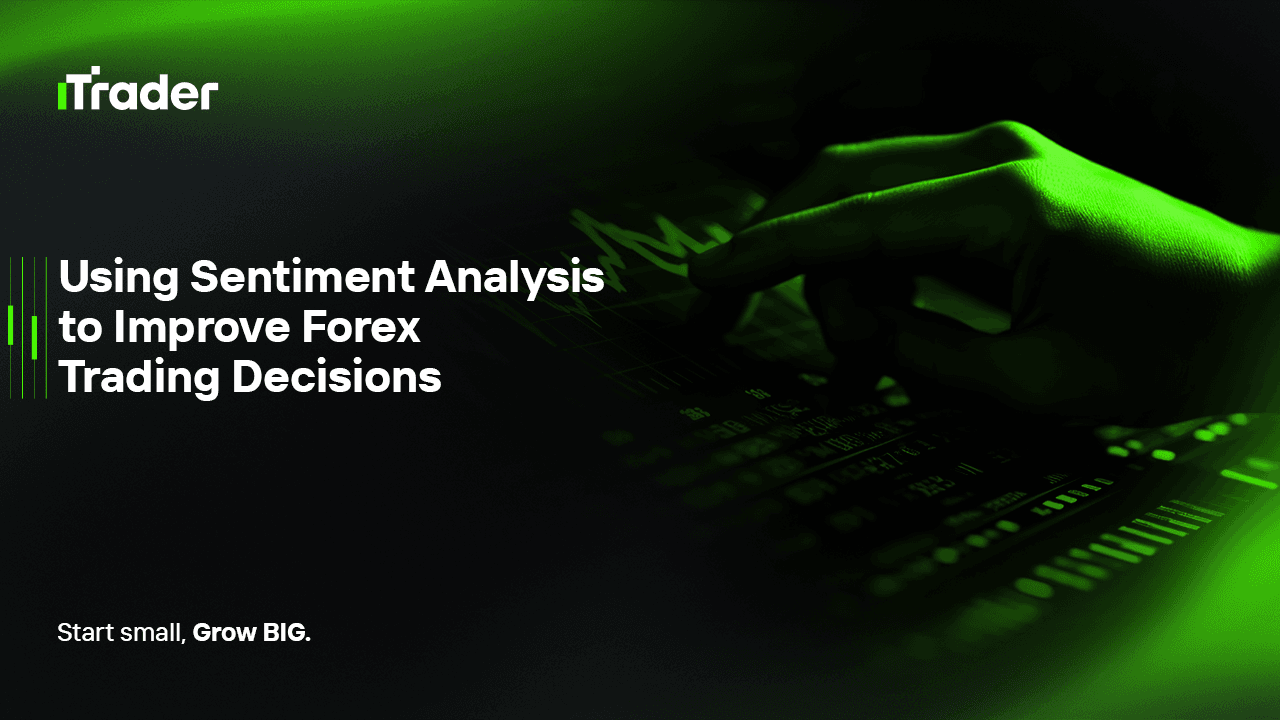2025-07-23
In the competitive and fast-moving world of prop trading, having a statistical or technical edge is often not enough. While technical analysis evaluates price action and patterns, and fundamental analysis examines economic data, there's a third powerful tool that traders often overlook: sentiment analysis.

Sentiment analysis focuses on how the market feels, or more precisely, how market participants perceive and react to information, often before it is reflected in price. For proprietary traders operating under strict performance expectations and limited drawdown windows, sentiment can offer crucial insights into crowd behavior, market overreaction, and potential reversals—enhancing both timing and directional accuracy.
AI Summary:
This article introduces how sentiment analysis can be effectively used by prop firm traders to enhance their decision-making process in the forex market. Beyond traditional technical and fundamental analysis, sentiment data offers a third dimension by quantifying the emotional and psychological tendencies of market participants. This guide provides a framework for understanding various types of sentiment, how to analyze them, and how to incorporate them into systematic or discretionary trading strategies in a prop trading context.
Sentiment analysis in trading refers to the process of quantifying the prevailing emotions and bias of market participants. It seeks to answer:
"Is the crowd optimistic, fearful, greedy, or uncertain?"
It involves extracting signals from sources such as:
In the context of prop trading, this allows for:
Platforms like IG Client Sentiment, Myfxbook, and Forex Factory aggregate long/short positioning from thousands of retail traders.
Contrarian signal logic is often applied here:
This is based on the empirical observation that retail traders tend to be on the wrong side of major moves.
The COT Report (Commitment of Traders) from the CFTC provides positioning data from large speculators, hedgers, and commercial players.
While it's updated weekly, it offers:
Natural Language Processing (NLP) algorithms extract sentiment scores from:
These signals provide context on how the market is digesting information, not just what the news is.
Platforms like Twitter, Reddit (e.g., r/Forex), and X.com offer unfiltered, real-time insight into trader psychology.
By analyzing:
...traders can gauge immediate shifts in sentiment, often before price reacts.
In prop firm challenges or funded accounts, traders must consistently demonstrate performance under strict risk controls. Here’s where sentiment analysis adds real value:
Sentiment can act as a filter:
Markets are emotional ecosystems. When positioning becomes overly crowded:
Timing is critical in prop trading. Sentiment data can:
Logic: When retail sentiment reaches an extreme (>75% long or short), consider fading the crowd.
Example:
Logic: Price makes new highs, but sentiment weakens → potential trend exhaustion.
Use case:
Logic: Sentiment spikes may confirm strong momentum or signal overreaction.
Application:
Advanced traders can:
Sentiment analysis, while powerful, is not without its challenges:
Sentiment analysis is not just a complementary tool—it’s a competitive edge for proprietary forex traders. By understanding how market participants think and feel, traders can position themselves ahead of the crowd, avoid traps, and capitalize on emotional inefficiencies.
2025 Ай Трейдер Глобал ХХК | Компанийн бүртгэлийн дугаар: 15962
Ай Трейдер Глобал ХХК нь Комор улсын Анжуан арал дахь Мутсамуду хотын Хамчакод байрлалтай. Тус компани нь Коморын Үнэт Цаасны Хорооноос (Securities Commission of the Comoros) олгосон L15962/ITGL дугаартай тусгай зөвшөөрлийн хүрээнд үйл ажиллагаа явуулдаг.
Ай Трейдер Глобал ХХК нь “iTrader” нэрийн дор үйл ажиллагаа явуулдаг бөгөөд (Форекс) арилжааны үйл ажиллагаа явуулах эрхтэй. Компанийн лого, барааны тэмдэг, вэбсайт нь зөвхөн Ай Трейдер Глобал ХХК компанийн өмч юм.
Ай Трейдер Глобал ХХК -ийн охин компани болох : iTrader Global Pty Ltd, Австралийн компанийн бүртгэлийн дугаар (ACN): 686 857 198. Энэ компани нь Opheleo Holdings Pty Ltd компанийн албан ёсны төлөөлөгч бөгөөд Австралийн санхүүгийн үйлчилгээний төлөөлөгчийн дугаар: 001315037 -тай. Австралийн санхүүгийн үйлчилгээний лицензийн дугаар: 000224485 -тай Level 1, 256 Rundle St, Adelaide, SA 5000 хаягт байршдаг. Анхааруулга: Энэ байгууллага нь энэхүү вэбсайт дээр болон дамжуулан арилжаалагдаж буй санхүүгийн (арилжааны) хэрэгсэл нийлүүлэгч биш бөгөөд ямар нэгэн хариуцлага хүлээхгүй болно.
Эрсдэлийн сэрэмжлүүлэг: CFD арилжааны хөшүүргийн улмаас хөрөнгөө хурдан алдах өндөр эрсдэлтэй тул бүх хэрэглэгчдэд тохиромжгүй байдаг.
Фанд, CFD болон бусад өндөр xөшүүрэгтэй арилжаа нь хэрэглэгчээс нарийн төвөгтэй ойлголтуудын талаар тусгай мэдлэг шаарддаг. Хөшүүрэгтэй арилжаанд оролцогчдын 84.01% нь алдагдал хүлээдгийг судалгаанууд харуулдаг тул хөшүүрэгтэй арилжаанд орохоос өмнө хөрөнгөө алдах маш өндөр эрсдэлтэй болохыг анхаарна уу.
iTrader нь аливаа иргэн, хуулийн этгээдийн өмнө xөшүүрэгтэй арилжааны эрсдэл, алдагдал, бусад хохирлыг бүхэлд нь хариуцахгүй болохыг мэдэгдэж байна.
Энэхүү веб сайтын мэдээ, мэдээлэл нь зөвхөн мэдлэг түгээх зорилготой тул хэрэглэгч та бие даан шийдвэр гаргана уу.
Хязгаарлалт: iTrader нь вэбсайт болон үйлчилгээгээ тухайн орны хууль тогтоомж, дүрэм журмаар хориглосон орнуудад оршин суугчдад чиглүүлдэггүй. Хэрэв та энэхүү вэбсайтыг ашиглахыг хориглосон оронд байгаа бол вэбсайт болон үйлчилгээг ашиглахдаа тухайн орны хууль тогтоомжид нийцэж байгаа эсэхийг шалгах үүрэгтэй. iTrader нь вэбсайтынхаа мэдээлэл бүх оронд тохиромжтой эсэхийг баталгаажуулдаггүй.
Ай Трейдер Глобал ХХК нь зарим улс орны иргэдэд үйлчилгээ үзүүлэхээс татгалздаг болно. Жишээлбэл: АНУ, Орос, Бразил, Канада, Израйл, Иран.